Measuring Blood Pressure Without Devices: Key Insights

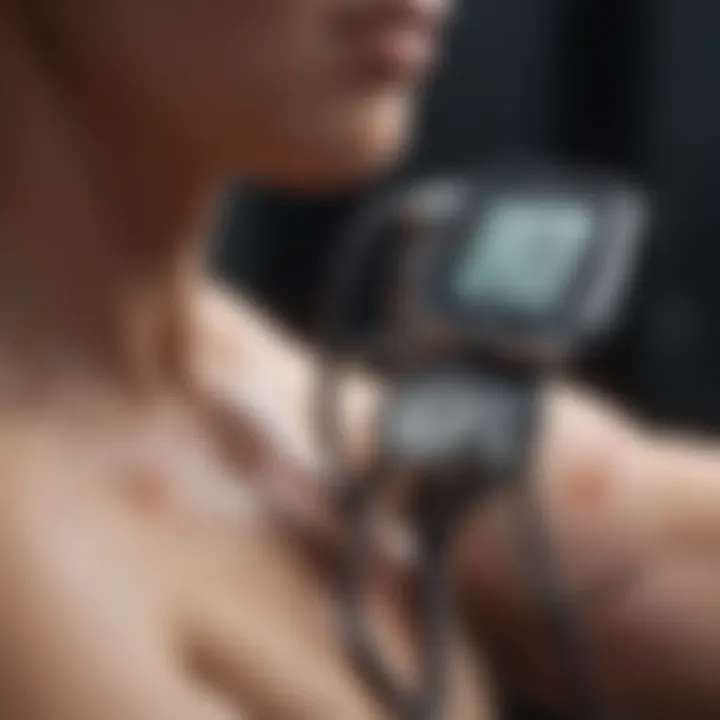
Intro
Blood pressure monitoring is a pivotal aspect of health care, and knowing how to measure it without equipment can be empowering. Particularly in scenarios where traditional tools are not readily available, understanding the fundamentals of blood pressure can provide invaluable insights into one’s cardiovascular health. While many people think of blood pressure measurement in terms of sphygmomanometers and stethoscopes, this article transcends the confines of conventional methods, exploring how individuals can gauge their blood pressure through keen observation and basic physiological knowledge.
Background and Context
Overview of the Research Topic
In contemporary health discourse, blood pressure has become a household term. The increasing rates of hypertension and its associating health risks have sparked interest in determining effective yet accessible methods for blood pressure assessment. While a number of technologies exist for this purpose, understanding how to estimate blood pressure manually can be a useful skill in both emergency settings and everyday life. This article provides insights into various manual techniques, integrates physiological principles, and highlights practical applications that anyone can adopt.
Historical Significance
Historically, blood pressure was measured long before electronic devices graced the medical field. Early practitioners utilized pulse palpation techniques to gauge cardiovascular function, a practice that dates back to ancient civilizations. Knowledge of one’s blood pressure response has always been essential, helping people understand their health risks and apply strategies for prevention or management of cardiovascular disease. As technology evolved, methods became more sophisticated, though the foundational principles remain intact.
"Understanding the fundamentals of any medical practice opens doors to better health management."
Key Findings and Discussion
Major Results of the Study
Through empirical evidence and anecdotal reports, several key findings emerge regarding the non-equipment methods of blood pressure measurement. Observational techniques regarding pulse and visual cues from physical exertion allow individuals to gauge their blood pressure levels effectively. For instance, a noticeable difference in pulse rate or changes in physical capability during exertion typically indicates variations in blood pressure.
Detailed Analysis of Findings
A deeper look at pulse perception reveals its importance in recognizing blood pressure changes. Here are some significant points to consider:
- Pulse Quality: Feeling the pulse at various points, like the wrist or neck, can indicate strength and regularity, which often correlates with blood pressure levels.
- Physical Symptoms: Observing for signs of dizziness, shortness of breath, or a pounding headache can suggest elevated blood pressure.
- Breathing Patterns: Changes in breathing, particularly during physical activity, may signal shifts in blood pressure status.
Learning these non-traditional indicators can lead to a more profound awareness of personal health. Insight gained from recognizing these cues can spur individuals to make informed lifestyle changes that support cardiovascular health. In this regard, the amalgamation of theoretical knowledge and practical application becomes apparent, positioning the reader to take ownership of their well-being.
By embracing this understanding, individuals may find themselves motivated to adopt healthier habits and seek further professional evaluation when necessary.
Intro to Blood Pressure
Monitoring blood pressure is no small potatoes; it's a crucial component in understanding our cardiovascular health. In this article, we aim to shed light on the fundamentals of blood pressure measurement without relying on fancy gadgets. By diving into this topic, you will not only grasp the intricacies of blood pressure but also appreciate the role it plays in your overall well-being.
Defining Blood Pressure
Blood pressure, in simple terms, is the force exerted by circulating blood against the walls of blood vessels. You might think of it as the pressure in a rubber hose when water flows through it—if the hose is pressed or constricted, the pressure builds up. Similarly, in our bodies, blood pressure is influenced by various factors such as heart action, blood volume, and the elasticity of blood vessels.
In the medical world, blood pressure is commonly expressed using two numbers: systolic and diastolic readings. The systolic pressure measures the force when the heart beats, while the diastolic pressure gauges the force when the heart rests between beats. These figures are important not just for doctors; being knowledgeable about them helps individuals better manage their health.
Importance of Monitoring Blood Pressure
Keeping an eye on your blood pressure can be a game-changer. Regular monitoring can provide insights into your current health status and even flag early signs of potential issues.
Here are a few key benefits:
- Prevent Health Issues: High blood pressure is often a silent killer. It can elevate your risk of heart attack, stroke, and kidney failure without showing symptoms. Tracking it can help in early detection.
- Customization of Lifestyle: Understanding your blood pressure can aid in making informed decisions about diet, exercise, and overall lifestyle choices. Knowing how changes affect your readings empowers you to take control.
- Guidance for Medication: For those already diagnosed with hypertension, close monitoring can guide adjustments in medication, ensuring you're on the right track.
In short, making blood pressure monitoring a regular part of life not only benefits individual health but also contributes to a broader dialogue about healthy living. After all, as the saying goes, "an ounce of prevention is worth a pound of cure." Let's get into how to measure it without any devices in the upcoming sections.
Historical Perspective on Blood Pressure Measurement
Understanding the historical context of blood pressure measurement is essential in grasping how far medical science has come and how these developments have framed current practices. From antiquated techniques to modern non-invasive methods, the journey in measuring blood pressure sheds light on significant philosophical shifts in health management and patient care.
The evolution of blood pressure measurement techniques reflects broader changes in medical technology, training, and understanding of human physiology. As we dissect the past, we can understand its central role in shaping our contemporary health landscape, especially regarding self-monitoring practices that increasingly transcend medical settings.
Evolution of Measurement Techniques
In the early days, practitioners had more rudimentary methods for understanding blood pressure. Ancient scholars would often rely on their senses—observing physical signs such as a patient’s pulse or skin color. It was not until the 19th century that a more systematic approach emerged. The invention of the sphygmomanometer by Samuel Siegfried Karl von Basch in 1881 marked a watershed moment. This device allowed practitioners to measure blood pressure more accurately by applying pressure to an artery and then gauging the response.
Significant milestones include:
- The introduction of the Riva-Rocci sphygmomanometer in 1896, which further advanced the accuracy in readings.
- Nicolai Korotkoff’s discovery of the auscultation method in 1905, which allowed healthcare professionals to differentiate between systolic and diastolic pressures.
These innovations not only improved measurement accuracy but also changed how doctors and patients perceived hypertension. The ability to quantify blood pressure paved the way for recognizing hypertension as a significant health risk, rather than merely a symptom of other ailments.
Transition to Non-Equipment Methods
As health awareness increased, so did interest in self-monitoring and non-invasive methods for assessing blood pressure. By the late 20th century, various approaches emerged that aimed to simplify blood pressure measurement and remove the need for cumbersome equipment. Today, techniques such as palpation and subjective symptom analysis have gained traction, particularly in environments where immediate access to medical devices is limited.
The shift toward non-equipment methods can be attributed to several factors:
- Accessibility: In remote areas or during emergencies, having a device may not be feasible. Alternative methods enable individuals to assess their conditions without reliance on equipment.
- Education: With increased knowledge about heart health, patients often feel more empowered to monitor their cardiovascular status.
- Cultural Adaptations: Different cultures have developed traditional practices for health monitoring, which now incorporate modern understandings of physiology with longstanding beliefs.
"Adopting techniques that don't rely on devices not only promotes immediate accessibility but fosters a deeper understanding of one's health."
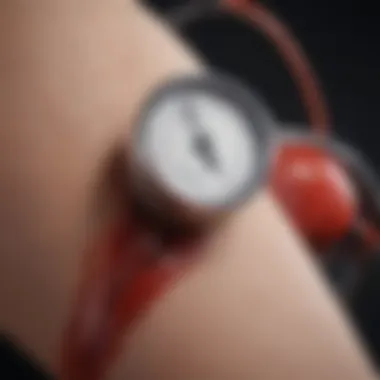

The past informs the present, helping us appreciate the significance of evolving techniques and the larger cultural shifts in our approach to health. Understanding these changes offers insights into how individuals can take charge of their cardiovascular health without always needing sophisticated machinery.
Physiological Basis of Blood Pressure Measurement
Understanding blood pressure measurement requires a foundational grasp of the physiology behind it. By exploring the physiological basis, we can appreciate how blood pressure reflects not just the health of the cardiovascular system, but the overall wellbeing of an individual. Key components such as the circulatory system and various factors influencing blood pressure readings are critical in this realm.
Understanding the Circulatory System
At its core, the circulatory system is a complex network responsible for transporting blood throughout the body. This system has several key parts: the heart, blood vessels, and blood itself. When the heart beats, it generates pressure that pushes blood through the arteries, which then branch out into smaller vessels.
Blood pressure is essentially the force that circulating blood exerts against the walls of blood vessels. It arises from two primary actions of the heart:
- Systolic Pressure: This occurs when the heart contracts and pumps blood into the arteries, representing the peak pressure during heartbeats.
- Diastolic Pressure: This is the lower pressure that occurs when the heart relaxes between beats, reflecting the pressure in the arteries when the heart fills with blood.
Together, these factors are often recorded as a fraction, like 120/80 mmHg. Proper understanding of this fraction is important because it signifies not only the functionality of the heart but also the elasticity and the health of the arteries. Any significant deviation from the norm can be indicative of underlying health issues.
To appreciate how this unfolds in practice, consider how various lifestyle choices—like diet, exercise, and stress—interact with the circulatory system, influencing blood pressure. For instance, a high-sodium diet can constrict blood vessels, thus producing high systolic readings. On the flip side, regular aerobic exercise improves the elasticity of blood vessels, potentially leading to lower and healthier diastolic pressures.
The mechanics of the circulatory system are intricate, and understanding these dynamics can equip individuals with insight into their cardiovascular health.
Role of Cardiac Output and Vascular Resistance
When examining blood pressure, cardiac output and vascular resistance emerge as key components that significantly influence blood pressure readings.
- Cardiac Output (CO): This term denotes the volume of blood the heart pumps in a given time span, usually measured in liters per minute. A higher cardiac output usually suggests more blood entering the arterial system, leading to potentially elevated blood pressure. For example, during physical exertion, CO increases, thus raising systolic pressure.
- Vascular Resistance (VR): This refers to the resistance the blood encounters as it flows through blood vessels. Factors such as vessel diameter and blood viscosity play vital roles here. Narrowing of arteries, whether due to plaque buildup or stress, increases resistance, thereby escalating blood pressure.
This delicate interplay between cardiac output and vascular resistance determines the efficiency of the circulatory system. For instance, in situations of high vascular resistance, the heart has to work harder to maintain adequate blood flow, which inevitably raises blood pressure. Conversely, a lower vascular resistance, due to vessel dilation, allows for smoother blood flow and lower blood pressure.
Blood pressure is not just a number. It’s a reflection of the intricate and dynamic interactions within the body’s circulatory system.
Understanding these fundamental elements can foster a deeper insight into both normal fluctuations and concerning trends in blood pressure readings without the need for sophisticated equipment.
Methods for Measuring Blood Pressure Without Equipment
Measuring blood pressure without traditional devices can feel like navigating through a jungle without a map. However, understanding the various methods can equip individuals with the essential knowledge needed for effective cardiovascular health monitoring. The techniques that don’t require foofy gadgets, like sphygmomanometers, help individuals stay informed about their health outcomes. Notably, the techniques discussed here can often be executed anywhere and at any time, making them a practical choice.
Palpation Technique
Procedure Overview
The palpation technique of measuring blood pressure uses the sense of touch to feel arterial pulse beats. It’s a straightforward approach, where one might use just their fingers on the radial artery located at the wrist or even at the carotid artery on the neck. This method revolves around the detection of pulses, indicating systolic pressure. While it won't give exact numbers, it serves as an initial screening tool to recognize major variability in blood pressure levels.
Additionally, its contribution to the overall understanding of blood pressure is significant. It familiarizes individuals with recognizing how pressure changes manifest physically in the body, a not-so-easy task especially for those unaccustomed to further techniques.
Advantages and Limitations
One of the primary advantages of this method is its accessibility; it’s like finding a shortcut in a maze. Almost anyone can perform it without needing extensive training, which makes it quite popular among community health workers and everyday individuals. Furthermore, the fact that it requires minimal preparation and no equipment is a big plus, saving both time and resources.
On the flip side, it has limitations. The most glaring one is its inability to provide diastolic readings. Relying solely on palpation can lead individuals to overlook crucial aspects of their cardiovascular health. Moreover, factors such as the person’s physical condition or the technique's execution may skew results.
Auscultation and Self-Assessed Techniques
Identifying Systolic and Diastolic Readings
Auscultation, while seemingly complex, is user-friendly once familiar. It involves using the ear to listen to Korotkoff sounds over an artery, usually the brachial artery in the arm, as blood begins to flow once a cuff is inflated and then slowly deflated. The first sound you hear—boom—is the systolic pressure. As the pressure decreases, at some point, the sound fades away, indicating diastolic pressure.
This method truly shines in terms of accuracy, making it a popular choice for many healthcare settings. It also reinforces a deeper understanding of the physiological aspects of blood pressure, facilitating a well-rounded grasp of cardiovascular health.
Limitations of Self-Assessment
Despite its accuracy, there are significant limitations to self-assessed techniques. Not all individuals possess the ability to apply this method correctly. Training, though not terribly extensive, is needed to grasp the nuances of sound identification. Moreover, there’s a risk of misinterpretation of sounds, which can lead to misinformation regarding one's actual blood pressure levels. Additionally, self-assessment often depends heavily on individuals’ knowledge and comfort with the process, which can vary widely. Lack of effective training is indeed a stumbling block for many who may wish to use these techniques effectively.
In summary, measuring blood pressure without equipment offers diverse avenues for understanding cardiovascular health. While methods like palpation may serve as quick checks, auscultation presents an opportunity for more detail, albeit with its own hurdles.
These non-equipment methods, while lacking in precision compared to their mechanical counterparts, can significantly enhance self-awareness regarding one’s health. Each technique carries its own set of pros and cons, but they all contribute to a more comprehensive awareness of blood pressure and its implications.
Understanding Normal and Abnormal Blood Pressure Ranges
Understanding the nuances of normal and abnormal blood pressure ranges is paramount in the broader context of health and wellness. Blood pressure is not just a number; it is a clear reflection of how effectively the heart is pumping and how elastic the blood vessels are. A solid grasp of what constitutes healthy blood pressure can aid in timely interventions and influence lifestyle choices profoundly. It's an area of keen interest for many who are looking toward self-care and preventative health measures. Thus, learning about these ranges becomes not just informative but essential in taking charge of one’s cardiovascular health.
Defining Hypertension and Hypotension
Hypertension, often dubbed as the 'silent killer', can sneak up without noticeable symptoms. It is generally defined as having a blood pressure reading higher than 130 systolic or 80 diastolic mmHg. Meanwhile, hypotension, or low blood pressure, is when readings fall below 90/60 mmHg. But it is important to mention, not everyone's normal is the same.
Key takeaways about hypertension and hypotension include:
- Hypertension can lead to serious health conditions like heart disease or stroke.
- Conversely, hypotension can result in symptoms such as dizziness, fatigue, or even fainting.
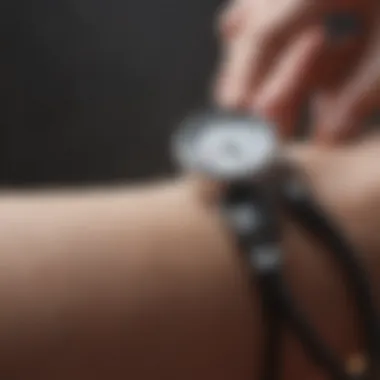
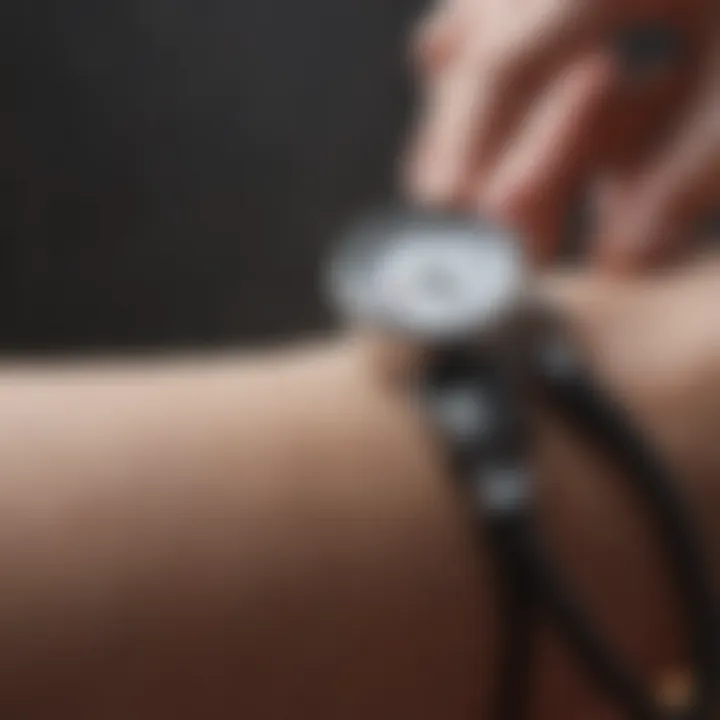
Knowing these definitions lays the groundwork for understanding the potential health impacts tied to these conditions.
Potential Health Implications
The implications of blood pressure ranges stretch far and wide, affecting not only individual health but also the healthcare system overall. Elevated blood pressure can create a domino effect, potentially leading to serious conditions like heart attack, kidney failure, or vision loss. On the other hand, consistently low blood pressure could signal underlying issues that need immediate attention.
- Impacts of Hypertension:
- Effects of Hypotension:
- Increased risk of artery damage
- Heightened stress on the heart
- Greater likelihood of plaque buildup in arteries
- Can point to dehydration or nutritional deficiencies
- May hinder blood flow to vital organs
- Could lead to shock in extreme cases
Given such striking ramifications, understanding the measurements behind normal and abnormal readings empowers individuals. This knowledge can prompt proactive discussions with healthcare professionals and enable lifestyle adjustments aimed at maintaining or attaining a healthier blood pressure level.
"Knowledge is power, especially when it comes to understanding your own health."
Plenty of individuals can manage their blood pressure effectively by integrating such insights into their daily practices. Realizing that these numbers signify more than just statistics can drive one toward healthier choices and, ultimately, a longer life.
Practical Applications of Blood Pressure Monitoring
Monitoring blood pressure without the use of traditional devices opens up a world of possibilities for managing health. Understanding these practical applications is crucial, especially for those either looking to take control of their health or to comprehend the implications of blood pressure in a broader sense.
Self-monitoring blood pressure can foster a greater awareness of one’s cardiovascular condition. Unlike relying on a periodic doctor's visit, frequent checking at home makes it easier to identify shifts in blood pressure due to lifestyle changes or stress. This can be particularly beneficial because it empowers individuals to adjust their habits before something critical develops. When people keep a close eye on their blood pressure, they can catch deviations early, leading to more effective interventions.
Additionally, incorporating non-instrument methods into routine health management offers cost-effective advantages. For those without access to medical devices, learning how to gauge blood pressure using techniques like palpation or auscultation can mean the difference between understanding a health issue and being left in the dark. Evaluating blood pressure can become a daily habit, enhancing engagement with one’s health in a way that is proactive rather than reactive.
Here are some key points about practical applications:
- Enhanced Self-Awareness: Regular monitoring fosters awareness of how lifestyle changes affect blood pressure.
- Cost-Effective Solutions: Learning to measure blood pressure without devices can reduce healthcare costs for individuals in low-resource settings.
- Empowerment in Health Decisions: When individuals grasp their health metrics, they are more likely to make informed choices.
"An ounce of prevention is worth a pound of cure" - This old adage holds true in healthcare, and self-monitoring is a pivotal part of that prevention.
Self-Monitoring as a Tool for Health Management
Self-monitoring blood pressure serves as a vital tool for health management. In a world that often emphasizes immediate solutions, cultivating a habit of self-assessment can significantly improve long-term outcomes. The practice isn’t merely about numbers; it’s about understanding the story the numbers tell about one’s overall health.
By adopting self-monitoring, individuals can track their blood pressure trends and correlate them with lifestyle factors such as diet, stress, and exercise. Engaging in this practice invites a deeper connection with one’s body. For instance, someone who notices a spike following a stressful week at work may begin to prioritize stress management techniques like yoga or mindfulness.
Moreover, maintaining a health journal with blood pressure readings can provide clarity during discussions with healthcare providers. These records often carry more weight than vague expressions of feelings. A clear pattern over time can lead to informed decisions about dietary adjustments or medication needs.
A few notable benefits include:
- Consistency in Tracking: Regular logs can reveal long-term trends that sporadic checks cannot.
- Personalized Adjustments: Observations from self-monitoring enable tailored health strategies.
Role in Preventive Healthcare
Preventive healthcare aims to avert health problems before they start, and blood pressure monitoring plays an undeniable role in this field. Both hypertension and hypotension can lead to severe complications if left unchecked, yet many individuals remain oblivious until a crisis ensues.
By integrating blood pressure measurement into daily life, prevention becomes attainable. For example, assessing one’s blood pressure can alert someone to potential hypertension long before it causes symptoms. With this awareness, proactive measures such as dietary changes or increased physical activity can be initiated right away. The essence of preventive healthcare is in foresight; thus, utilizing self-measurement effectively can transition individuals from reactive treatments to proactive strategies.
The ripple effects of this practice extend beyond the individual. Communities with heightened awareness of blood pressure management can lead to broader public health improvements. Consistent education on the significance of monitoring can engender a culture of health that values prevention. It’s a collective movement toward healthier living, with each individual contributing their part.
Consider the following:
- Community Awareness Initiatives: Promoting educational programs can lead to shared knowledge and collective health improvements.
- Screening Campaigns: Nationwide campaigns can encourage routine monitoring, urging populations to assess cardiovascular risks.
As we delve into blood pressure monitoring, the call for continuous education and practice resonates often. With the right knowledge and approach, managing blood pressure effectively—even without devices—can shift from being an analysis of figures to a pathway towards a healthier future.
Cultural Perspectives on Blood Pressure Assessment
Understanding blood pressure measurement goes beyond basic physiological concepts; it ventures into the realm of cultural perspectives, which can profoundly influence health attitudes and practices. Blood pressure is an indicator not only of physical health but also entwined with cultural beliefs, practices, and societal concerns. In many cultures, the comprehension and management of health metrics are guided by traditional beliefs that shape medical practices. This exploration is essential for grasping how various communities perceive health and the significance they attach to monitoring blood pressure.
Traditional Practices and Beliefs
Throughout history, many communities have developed their methods to assess health based on locally prevalent customs and available knowledge. For instance, in several indigenous cultures, health is often interpreted through a holistic lens, where physical, spiritual, and emotional well-being are interconnected.
In African traditions, blood pressure can be viewed in the context of community health, where elders may rely on their experience and observation of fellow community members rather than medical devices. Auscultation through a handheld conch shell or other instruments may replace modern sphygmomanometers.
Moreover, traditional medicine often employs herbal remedies or dietary modifications believed to support heart health.
- Community Involvement: In many cultures, collective health management gets emphasized rather than individual assessments. A group may come together during gatherings to share knowledge about health, including signs of hypertension.
- Beliefs About Blood: In some places, blood pressure isn't merely numbers; it represents vitality and life force. A person’s health status may be evaluated based on observation and intuition, leading to practices that prioritize lifestyle adjustments over clinical measurements.
Integration into Modern Medicine
As the medical landscape evolves, integrating traditional approaches into modern healthcare has become increasingly important. Acknowledging these cultural practices ensures that healthcare becomes more inclusive and accessible. For example, healthcare providers can enhance patient compliance by showing respect for indigenous practices or even incorporating them into treatment plans.
This is observed in countries where traditional healers work alongside allopathic practitioners. By sharing knowledge and understanding, both systems can benefit and provide comprehensive care.
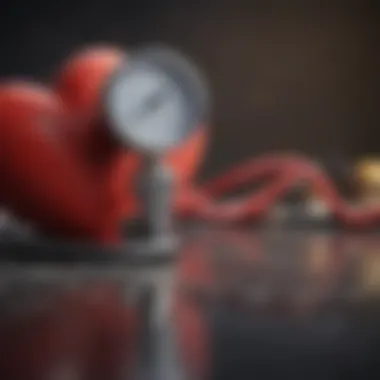
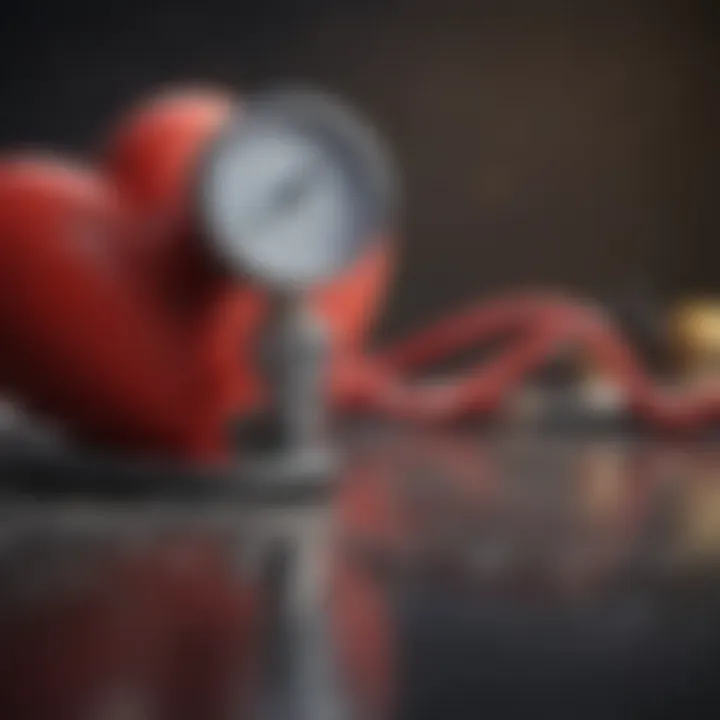
"Integrating indigenous knowledge into modern health care not only validates traditional wisdom but also enriches clinical practices."
- Respect for Traditions: Acknowledging cultural methods invites more significant patient trust and willingness to engage with healthcare providers.
- Tailored Treatment Plans: Considering cultural beliefs can help shape strategies that resonate with patients, leading to better adherence to health management.
- Broader Health Perspectives: This integration also highlights the importance of holistic health, focusing on mental and emotional well-being alongside physical metrics like blood pressure.
The intersection of cultural practices and modern medicine is vital in understanding blood pressure assessment in a comprehensive manner. It's not merely about numbers but about the narratives, values, and contexts that surround these measurements.
Challenges in Non-Equipment Blood Pressure Measurement
Measuring blood pressure without the usual equipment is a fascinating, yet intricate process. While many may find it liberating to rely on methods that don't involve cuffs or monitors, this approach comes with its own array of hurdles. Understanding these challenges is paramount, especially for those looking to embrace non-traditional techniques in monitoring cardiovascular health.
Accuracy and Reliability Concerns
One of the most significant issues when it comes to non-equipment blood pressure measurement is the question of accuracy. Unlike sphygmomanometers, which provide a standard pressure reading, methods such as palpation can lead to misinterpretation. If you're only able to feel the pulse without measuring it precisely, there’s a risk of underestimating the diastolic pressure. This can lead to misdiagnosis, which ultimately could have serious health implications.
"Accuracy isn’t just about precision; it’s about understanding the full picture of cardiovascular health."
Additionally, environmental factors play a role. For instance, measuring blood pressure under stress or in a noisy setting may skew results. When someone is anxious or agitated, their blood pressure might be artificially elevated. That’s why it's crucial to create a calm environment when attempting to assess one's blood pressure without tools.
Moreover, individuals may vary widely in technique. Different hand positions, methods of palpation, and even individual anatomy can influence the readings. Training and consistent practice become essential to ensure that the results are reliable over time.
Education and Training Needs
With the rise of non-equipment methods, there’s an increasing need for proper education. It’s not merely enough to introduce these methods to the masses; a solid educational foundation must accompany them. To successfully measure blood pressure without devices, one requires both knowledge and skill. This involves understanding cardiovascular physiology, grasping the significance of pressure readings, and recognizing the limitations of their methods.
Incorporating educational programs in schools, healthcare settings, and community workshops can foster a better understanding. It’s not just about learning how to measure blood pressure; it’s about understanding what those numbers signify—making informed decisions about one’s health is crucial.
Furthermore, ongoing training could help ensure skill retention and enhance the accuracy of measurements over time. Workshops could offer a combination of theory and hands-on practice, reinforcing proper techniques while stressing the importance of reliable readings. In a world where health awareness is more critical than ever, equipping people with the skills to self-monitor their blood pressure without reliance on machines can be empowering.
Having a thorough grasp of the challenges associated with non-equipment blood pressure measurement helps not just individuals but also healthcare providers in developing effective strategies to advise patients. Understanding these nuances can aid in creating safer, more reliable health practices.
Future Directions in Blood Pressure Measurement
The landscape of blood pressure measurement is evolving at a brisk pace, partially due to the rising interest in non-invasive methods. This section seeks to explore upcoming trends and innovations in blood pressure measurement without equipment. It is paramount to highlight that as healthcare continues to advance, alternative approaches to assessing cardiovascular health are taking center stage. The integration of non-traditional techniques may not only enhance accessibility but also empower individuals to take charge of their health.
Technological Innovations and Trends
In recent years, several technological advancements have laid the groundwork for revolutionary changes in blood pressure assessment. Tools leveraging smartphone technology, for instance, have begun journeying into the spotlight. An app that utilizes a phone's camera to monitor pulse variations is a case in point. This method, while not replacing traditional measurement, provides a convenient, albeit preliminary, screening tool. The implications could be quite profound, especially in areas where access to conventional healthcare facilities is limited.
Another significant trend involves the gathering of big data and analytics. The democratization of health data enables individuals to record and track their health metrics consistently. Wearable technology, such as smartwatches that monitor heart rate and rhythm, is gaining traction. This tech not only keeps tabs on regular heartbeats but can also alert users to concerning irregularities that warrant further investigation. As more individuals engage with these devices, public health insights are likely to improve.
Additionally, researchers are working on algorithms that assess cardiovascular risk through user input and historical data without the need for direct measurements. This method relies heavily on individualized information input by users such as age, family history, and lifestyle habits. Given that blood pressure is a critical indicator of health, these technologies have the potential to broaden accessibility to cardiovascular screening on a grand scale.
Integrating Non-Equipment Methods in Healthcare
Integrating non-equipment methods into the traditional healthcare model presents both opportunities and challenges. For one, it allows medical professionals to harness readily available techniques in varied settings. Practitioners and educators can provide training workshops focusing on methods like palpation and auscultation, thus fostering a well-rounded understanding among healthcare workers and patients alike.
On the other hand, there lies a pressing need for standardization and training. Without a framework governing the acceptable practices, variations in technique could lead to unreliable results. Setting up clear training protocols could help bridge this gap.
The importance of collaboration cannot be overstated; partnerships between technologists, healthcare practitioners, and educators will be crucial in ensuring these methods are not only accepted but also used effectively in clinical settings. Encouraging a dialogue between conventional practitioners and those advocating for non-traditional methods could foster a more inclusive approach to cardiovascular health.
"The future of cardiovascular health may very well rely on our ability to adapt and integrate these new methodologies."
Finale
In closing, the realm of blood pressure measurement without equipment offers both an enlightening and practical perspective for gauging cardiovascular health. Understanding how to assess blood pressure through non-traditional methods is not just an academic exercise; it serves real-world applications that can have significant health implications. The exploration of this topic underscores a few standout elements that are no less than critical for anyone seeking to ensure their well-being or aid others in managing their health.
Firstly, embracing these methods can lead to increased awareness of one's own health. Many people might not realize how everyday habits—stress levels, diet, and physical activity—affect their blood pressure. By learning to measure blood pressure through palpation and other hands-on techniques, individuals cultivate a heightened sense of bodily awareness. They can better understand the signals their body sends, leading to proactive health management.
Moreover, these skills can easily become an integral part of wellness routines, ensuring everyone from students to professionals grasps the importance of maintaining healthy blood pressure levels. Once mastered, these methods can quickly turn into lifelong habits that serve not only to monitor health but also to inspire others to engage in health discussions.
Additionally, this knowledge is pivotal in promoting community health. With growing awareness, people can share their insights with family and friends, fostering conversations about cardiovascular health in informal settings. These discussions might not only enlighten peers but could potentially lead to early detection of issues, resulting in improved health outcomes for those around them.
Lastly, the focus on knowledge engagement underlines the importance of ongoing education. As the medical landscape continues to evolve, staying updated about blood pressure management ensures that individuals are equipped with the latest and most effective strategies to maintain cardiovascular health.
Thus, understanding and applying these techniques does not merely enhance personal health; it also contributes to a broader cultural shift towards preventive healthcare and community consciousness.
Summation of Key Insights
To encapsulate the essence of blood pressure measurement without equipment, viewers must recognize several core insights:
- The art of palpation and self-assessment techniques allows for immediate feedback about one's health status.
- Awareness of normal and abnormal blood pressure ranges empowers individuals to make informed health decisions.
- Cultural understandings play a significant role in how blood pressure is perceived and managed across different backgrounds.
- Challenges such as accuracy and reliability are mitigated through education and practice.
- Emerging trends in non-equipment methods suggest a growing integration into holistic health practices.
It's essential to realize that even without a sphygmomanometer, valuable insights into one's cardiovascular health can still be gleaned through these accessible techniques.
Encouragement for Continued Knowledge Engagement
As we draw this discussion to a close, it's vital to articulate a call to action for readers. Knowledge shouldn't be a one-time acquisition; rather, it's a continuous journey. By seeking new information, attending workshops, or simply engaging with others who share an interest in health, individuals can expand their understanding and refine their techniques over time.
Engagement can take many forms:
- Participate in community health events, workshops, and forums focused on cardiovascular health.
- Read updated literature and research articles on blood pressure and its relevance to overall wellness.
- Share experiences with peers, further broadening the collective knowledge within personal and community networks.
In so doing, not only do individuals enhance their skills, but they also contribute to a supportive culture of health awareness.
Ultimately, your health is in your hands. Equip yourself with the knowledge and techniques described throughout this article to take the reins on your cardiovascular health—and encourage others to do the same.







